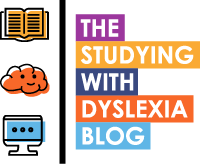Even if a child has a diagnosis of dyslexia, they may be experiencing aspects of the other neurodiverse conditions. Zoe Pennant shares some insights on how to teach a dyslexic child whilst keeping in mind co-occurring differences.
Children that have dyslexia at times experience other aspects of the dyslexia family for example dyscalculia, dysgraphia and dyspraxia depending on which part of the brain is being affected, some people call this a spiky profile.
In my experience when assessing children with dyslexia I have identified that children can also be connected to the other ‘Dys’ family which would cause an effect on their learning if not picked up early enough.
When I am working with children I am not just looking for how they read and write if they are dyslexic, I explore the whole picture to find best ways to teach them. If a child has been diagnosed with dyslexia but also experiences difficulties with holding a pen e.g when they write their hand hurts constantly, this could be an indication of a form of dysgraphia or dyspraxia.
The ‘Dys’ family can be very complex, so if we put the labels to one side for a second and just look at the way that a child learns we are more likely to see what is missing and what needs to be added.
Below are some simple games that can support children with these conditions, creativity is key for a child who experiences neurological conditions.
Dyspraxia - Motor Skills
Traits of dyspraxia is a form of developmental co-ordination that affects movement and balance. Fine motor skills are linked to pencil and scissor skills, I.T skills and self care skills (for example doing up laces and dressing for school) which are all linked to academics in a child’s learning.
This is a game that can be played to practise balance, concentration, movement and learning direction.
A child has to use their finger to try and get to the bone starting from the dog, this is a game that if a child uses both their left and right finger to practise, they will be strengthening both sides of the brain.
Dyscalculia – Numbers and telling the time.
One of the signs that a child may have the traits of dyscalculia is when they are having difficulties with telling the time from a clock but may know how to tell the time from a digital clock.
A creative way to start getting your child to remember the numbers on the clock is by getting a clock without a face (this could be a sheet of paper or a real clock and get your child to cut out numbers and stick them on. This will activate the brain and help with memory as this activity is more effective than just telling a child.
Another tip.
Get a dice and play rolling the dice when their number comes up they have to write the number on the clock, again this allows your child to connect the numbers to the clock. When they are confident with this process then you can move on to the next stage which could be understanding quarter past and quarter to.
Dysgraphia – Writing.
Dysgraphia can generally appear when a child is first starting to write, getting their letters on paper and understanding the shapes of the letters and numbers can be difficult for them. When they get older they may be slow at writing, their handwriting may seem messy and can mix up upper and lower case letters.
This is a game that can be practiced for primary age. Create a word search where a child has to choose a word find the letter in the box and then write the letter at the top of the word until the letters make the word they are looking for. This is a good game to play when practising writing letters and words and can be played with family members or carers.








